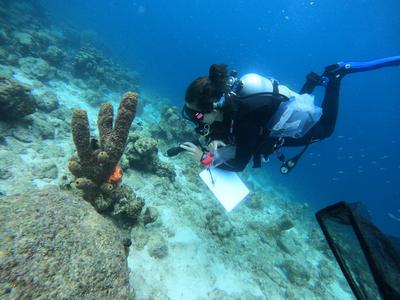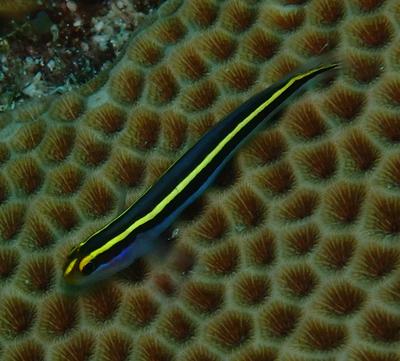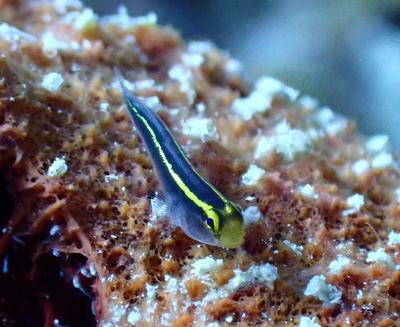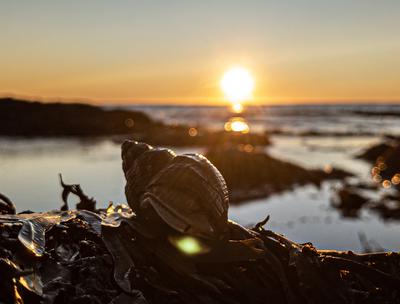Dispersal
For marine species with limited adult mobility, the larval phase offers a unique opportunity for individuals to disperse. Some individuals stay close to home, while others travel vast distances. We measure this variability in dispersal capacity and work to understand why it exists. We primarily use genetic approaches such as parentage analysis, sibship reconstruction, and population assignment tests to figure out how far larvae travel. We have a special fondness for coral reef fishes, but are also interested in exploring dispersal in understudied invertebrate taxa (e.g., sponges, echinoderms) with diverse developmental and reproductive modes.

Kin structure
The distribution of kin within populations impacts processes such as kin competition, inbreeding, and kin selection. To date, evidence for within-population kin aggregations has been mixed for species with a dispersive larval phase. We are combining genomic and mathematical approaches to understand how kin groups could form within marine populations. Our work has explored how stochastic demographic processes, collective larval movement, and limited dispersal can drive spatial patterns of kinship. We are also interested in empirically evaluating whether group-living marine organisms co-exist with kin.

Sponge-fish ecological interactions
Many cryptobenthic fishes occupy invertebrate hosts, including sponges. We are especially interested in exploring the nature of fish-sponge symbioses. From the fish’s perspective, we are interested in the fitness trade-offs of occupying different hosts and understanding how fish cope with resource-rich but “risky” hosts. We are also interested in exploring how other sponge infauna influence these symbioses. These study systems are also well-suited for ecological studies of (1) fish group dynamics and stability and (2) fine-scale, post-settlement movement across the seascape.

Conservation genomics
A major conservation goal is to ensure the long-term persistence of species with diverse life histories. We explore both the usefulness and the limitations of applying genomic data to support that goal. With collaborators, we developed conceptual models related to (1) optimizing connectivity and adaptive potential within protected area networks and (2) integrating intraspecific genetic data into spatial conservation prioritization. In Atlantic Canada, we work with colleagues at DFO to study how genomic data can help define conservation units in dispersal-limited species. In Belize, we collaborate with the University of Belize's Environmental Research Institute to quantify connectivity in harvested finfish.
